Ultimate Guide to Warehouse Lighting
Table of Contents
Industrial settings such as warehouses demand well-thought-out lighting plans to ensure optimal functionality, safety, and efficiency. The proper illumination can significantly impact various aspects, including productivity, energy consumption, and even the well-being of the workers. However, the complex requirements of warehouse environments often make this a challenging task. That’s where our “Warehouse Lighting: The Definitive Guide” comes into play.
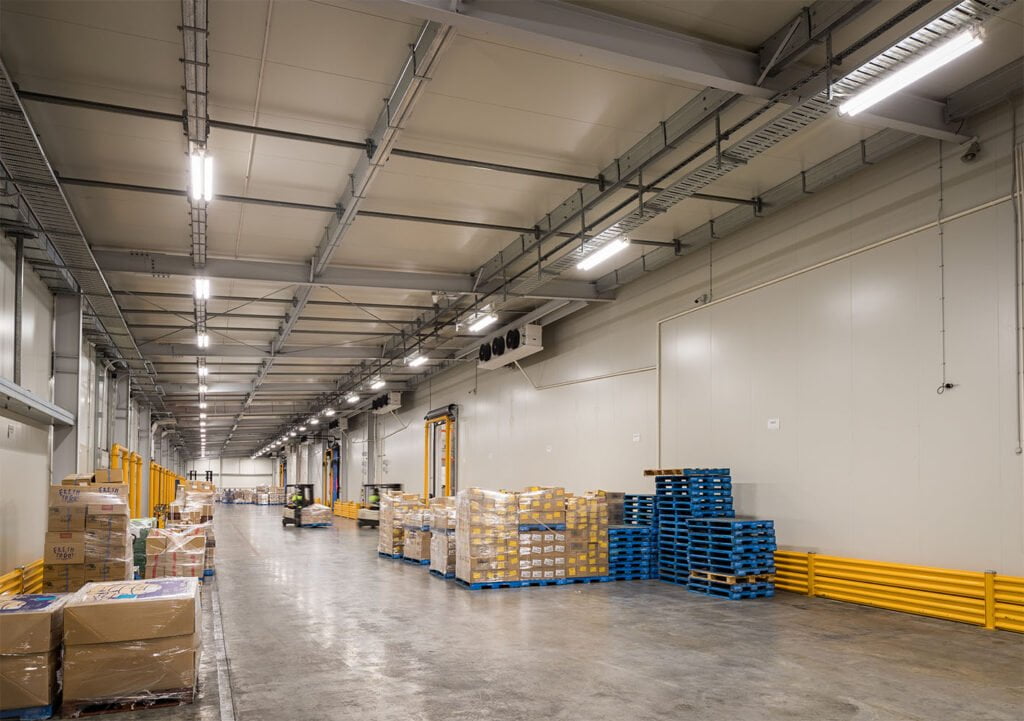
This comprehensive guide is designed to illuminate the path to achieving effective warehouse lighting, whether you are setting up a new facility or looking to upgrade an existing one. We delve deep into various facets of warehouse lighting, exploring different lighting solutions, the science behind light and visibility, understanding lumens, how they affect the workspace, and best practices to ensure compliance with lighting standards. This guide aims to give you the knowledge you need to make well-informed decisions about your warehouse lighting setup.
Aside from weighing the costs, many other elements require your attention, particularly if your warehouse isn’t benefiting from natural light. This article has been crafted to assist those searching for the right warehouse lighting solutions. We aim to provide comprehensive answers to all your queries. Without further ado, let’s delve into it.
Fundamentals of Warehouse Lighting
Before delving into the intricacies of warehouse lighting, there are essential aspects that warehouse proprietors should comprehend. It is important to consider these considerations before deciding on any specific warehouse lighting system.

1. Reducing Energy Consumption for Cost-Effective Warehouse Management
The average warehouse in the United States expends approximately 6.1 kilowatts of energy. In those warehouses without temperature control, lighting proves to be the primary energy consumer. As warehouse maintenance forms a considerable part of a business’s operational budget, seeking ways to cut these expenses is crucial. Although numerous methods exist to curtail energy usage in temperature-controlled facilities, our primary concern is minimizing the operational cost associated with warehouse lighting.
Decreasing the energy utilized by lighting reduces overhead expenses and boosts the overall profit margin. Therefore, it’s a significant aspect to consider when seeking solutions for warehouse management.
2. Enhancing Safety and Ambient Conditions through Effective Lighting
The fundamental aim of warehouse lighting is to augment utility and provide an ambiance conducive to work. The last thing you would want is for your staff to trip over a container packed with delicate items. Moreover, the ambiance created by the lighting should prevent lumen depreciation, reduce initial costs, and increase the lifespan of the lights in use.
3. Boosting Productivity through Optimal Lighting Solutions
Managing and working in a warehouse may not be the most thrilling job. Poor lighting can compound this, causing employees to feel dizzy and tired, thereby hampering productivity. In addition to affecting mood, inappropriate lighting can trigger various health issues. For instance, flickering from traditional lights is linked with headaches, nausea, and other medical complications. Therefore, it’s essential to implement a lighting solution that averts such issues and fosters a healthy work environment for staff.
4. Decreasing Maintenance Costs with Durable Lighting Solutions
Setting up a warehouse may seem challenging, but managing it can be more significant. A fragile lighting solution requiring frequent repairs can exacerbate this challenge. The ideal solution should offer durability, with a replacement not necessary for at least several years. Thus, businesses should seek solutions that deliver benefits and remarkable longevity.
Effective Warehouse Lighting: A Comprehensive Guide
The following factors should be considered when choosing an optimal solution for warehouse lighting.
1. Lumen-based Brightness
LED brightness is primarily determined by lumens, with higher lumens equating to brighter light. The number of lumens needed depends on the size of the space to be illuminated, typically around 10 lumens per square foot for a warehouse. The required lumens, however, can greatly vary depending on warehouse design and ceiling height.
2. Prioritizing Energy-Efficient Lighting
Energy efficiency is key in warehouse lighting. The goal is to identify a solution that uses minimal energy without sacrificing the usefulness of the light. Smart LEDs are a top choice; many come with sensors to avoid excessive usage. They also offer flexibility with adjustable brightness and color temperature controls.
3. Focusing on Longevity
It is critical for warehouse lighting solutions to be durable, reducing the need for frequent fixture replacements. Commercial LED fixtures generally last between 8,000 to 10,000 hours, ensuring you’re set for at least a few years after installation.
4. Considering Color Temperature
Color temperature, measured on the Kelvin scale from 1,000K to 10,000K, refers to the color hue emitted by a light source. Selection should be based on the needs of a specific area. For instance, brighter areas may need a cool color temperature starting at 4,000K.
5. Evaluating Beam Angle
The beam angle describes the light spread: a broader angle covers a larger area. Different light fixtures have different beam angles, determining their applications. A beam angle ranging from 90 to 120 degrees is typically optimal for indoor lighting, such as in a warehouse.
6. Understanding the Importance of CRI
The Color Rendering Index (CRI) quantifies how closely a light source mimics natural light. A high CRI light source reflects colors similar to those seen under sunlight. The choice of CRI should be in line with the needs of different areas within a warehouse.
Understanding Warehouse Lighting Solutions
When considering warehouse lighting solutions, understanding the options available and their benefits can help you make the best choice. It’s worth noting that an optimal warehouse lighting setup will likely require a combination of different types of lights.
1. Introduction to Tube Lights in Warehouses
Tube Lights are a widely used lighting solution in warehouse environments due to their versatility and effectiveness. Their optimal installation points include specific locations like ceilings at certain heights and varied warehouse spaces, such as breakrooms, offices, and storage areas.
Variety of Tube Lights for Diverse Warehouse Needs
Tube Lights come in several types, each with different features to suit specific lighting requirements:
- Type A Tubes: Compatible with the pre-installed ballasts in the warehouse.
- Type AB Tubes: Versatile as they can function with or without ballasts.
- Type B Tubes: Bypass the need for a ballast.
- Type C Tubes: Require an external driver and don’t operate with existing ballasts.
Tube Lights come in standard lengths of 2, 4, and 8 feet, allowing selection based on specific needs.
2. High Bay Lights for High Ceiling Warehouses
High Bay Lights are an excellent choice for warehouses with high ceilings ranging from 20 to 45 feet. They provide direct and effective lighting to the floor level. Like Tube Lights, High Bay Lights are flexible in their applications and come in various designs.
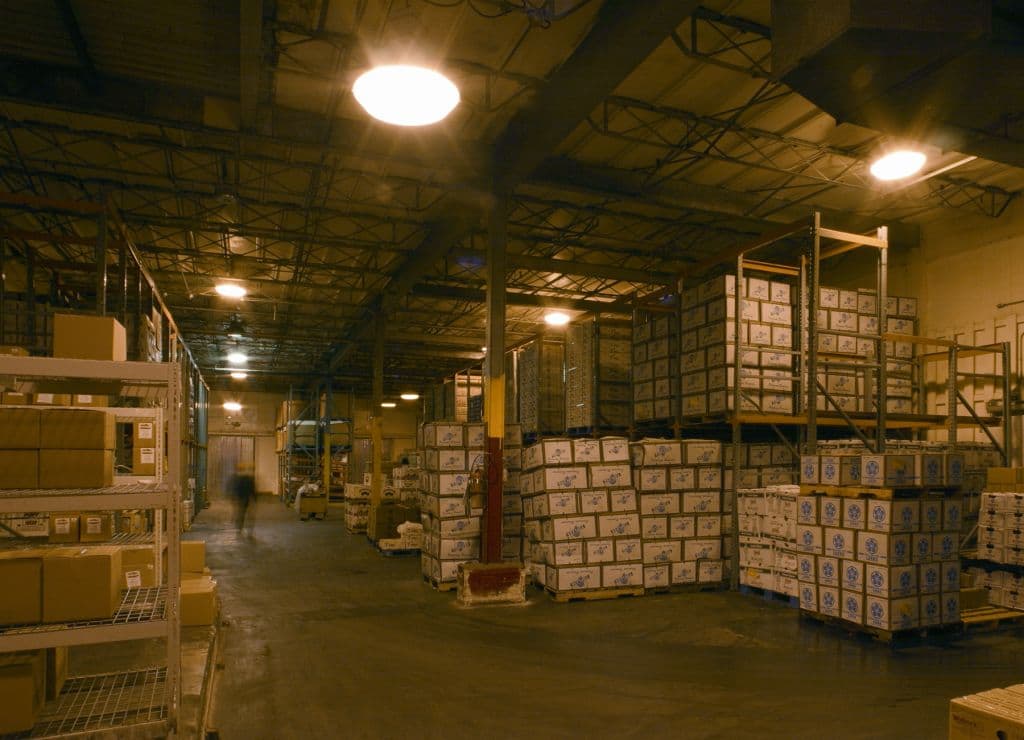
Understanding Linear High Bay Lights and Their Applications
Linear High Bay Lights provide rectangular and more precise lighting, making them an excellent choice for shelves and aisles. They offer flexible installation options, including surface, suspension, and pendant mounting. These lights are commonly found in large-scale facilities such as warehouses, manufacturing plants, airport hangars, and theaters. Linear High Bay Lights come in various diameters and lengths and can effectively illuminate areas with ceiling heights lower than 20 feet.
Round High Bay Lights: Broad Coverage and Easy Installation
Unlike their linear counterparts, Round High Bay Lights possess wider beam angles, effectively covering expansive areas. Their single contact point simplifies the installation process. They are perfect for enhancing visibility in storage facilities.
3. Troffer Lights: Powerful Lighting for Various Spaces
Troffer Lights, also known as drop-ceiling lights, are perfect for spaces that require potent lighting. Their low-profile design and clean line installation combine with diffusers to achieve optimum lighting effects. Their combination of indirect and direct light creates enhanced visual results, making them ideal for offices, retail spaces, healthcare facilities, schools, and warehouses.
4. Wall Pack Lights: Diverse Applications and Types
Wall Pack Lights, aptly named for their wall-mounting design and box-shaped fixtures, primarily illuminate warehouse facades for pedestrians and incoming vehicles. There are several types of wall-pack lights: traditional, full-cut-off, and slim wall-pack lights. Each has unique features and use cases, from providing wide beam angles to preventing light pollution and adjustable beam angle provision.
5. Strip Lights: Compact Design with Effective Illumination
Industrial strip lights provide an effective lighting solution for small-sized buildings with their brilliant light pattern, low profile design, and minimal footprint. They can be ceiling-mounted for a neat look and are best suited for factory floors, storage and utility zones, hallways, stairwells, and retail locations.
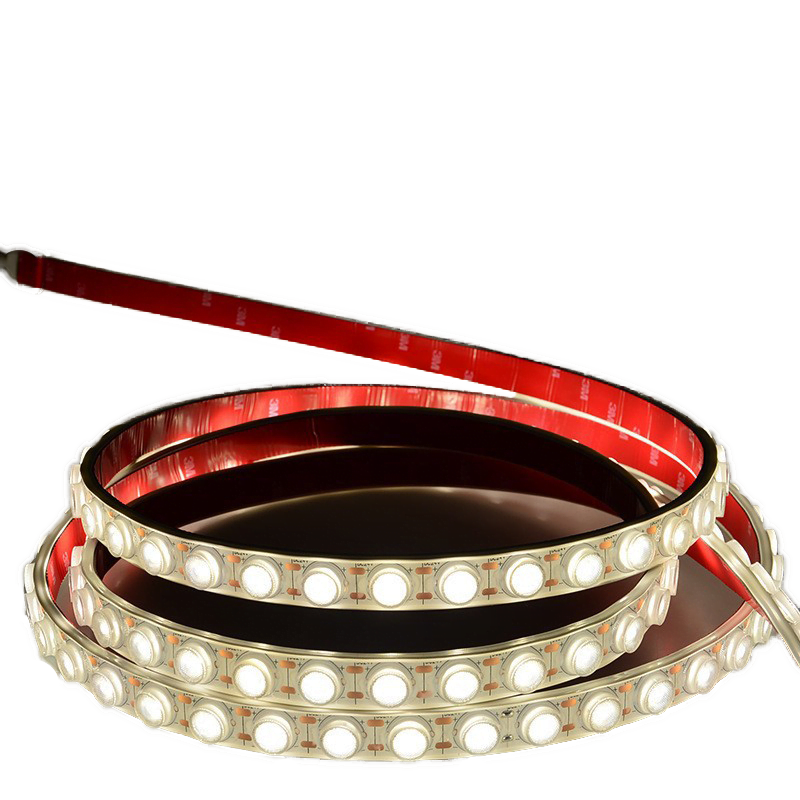
The Benefits of Choosing LEDs over Traditional Lighting in Warehouse Settings
Three pivotal factors are considered in the context of lighting for warehouses: cost-effectiveness, durability, and utility. LEDs excel in all these aspects, rendering them the most economically efficient solution for warehouse lighting. To elaborate, LEDs consume around 75% less energy than traditional incandescent bulbs, all while offering tenfold durability. When you opt for LED lighting solutions, you stand to reduce your energy expenditure by 75% and also alleviate the burden of frequent replacements.
Although the initial cost of LEDs can be higher, this should not be a deterrent. In the long-term perspective, they present much better value. Additionally, LEDs offer greater versatility due to their diverse range, enabling you to optimize the utility of the warehouse space.
Of significant note are smart LED lights, capable of adjustable brightness, and color temperature and dimmable as necessary. Such lights enhance energy efficiency while boosting the utility in various spaces.
Effective Maintenance Tips for Warehouse LED Lights
Once the LED solutions are installed in a warehouse, following certain tips can ensure their maximum efficiency.
- Be vigilant of loose, burnt-out, or underperforming fixtures hindering optimized lighting. While LEDs are generally resistant to such issues, if they do occur, immediate replacement is recommended for optimal lighting.
- Scheduling an annual cleanup for the fixtures can aid in maintaining their performance over time. Dust accumulation can lead to diminished light output. Hence, regular cleaning can significantly enhance lighting conditions.
- Regularly check the preset factors of every dimmer to ensure they perform according to the specified requirements.
Summary
The significance of adequate lighting in factories, offices, and warehouses cannot be overstated. For such settings, the necessity is for lighting solutions that are economical, enduring, and adaptable.
LED lights fulfill these requirements perfectly, making them the ideal choice for illuminating warehouses. These lights not only cut down on your energy consumption but also eliminate the need for frequent maintenance, all without sacrificing their functionality. Even though LEDs can be utilized virtually anywhere, the specific fixtures and methodologies for their deployment differ across various locales. This article aims to provide clarity on their optimal use in warehouse settings.
MyLikeLed is a renowned producer of top-tier LED strips and LED neon flex. Our offerings are tested in advanced labs to guarantee superior quality. Moreover, we can customize our LED strips and neon flex to suit your specific requirements. For first-rate LED strips and LED neon flex, don’t hesitate to reach out to MyLikeLed!
FAQs
Good lighting in warehouses improves visibility, increases safety, boosts productivity, and helps reduce mistakes during work.
The best lighting options for warehouses are LED high bays, strip lights, and linear lights, as they provide bright, energy-efficient illumination.
The amount of lighting needed depends on the ceiling height, the size of the area, and the type of work being done. Following lux level standards can help you set up the right amount of lighting.
Yes, switching to LED lights can significantly lower your energy bills and maintenance costs because they use less power and last much longer than traditional lighting.
Yes, using motion sensors is a smart choice—they help save energy by automatically turning off the lights when no one is around.
Neutral white lighting between 4000K and 5000K is ideal, as it offers clear visibility and helps workers stay focused.
Yes, LED strip lights are great for accent lighting or for use in specific areas like workstations, shelves, or narrow spaces.

Hi, I’m Xylia Xiong, a sales professional with 14 years of experience in the LED strip light industry. I specialize in providing tailored solutions, leveraging my expertise in LED products and the latest industry trends. Known for effective communication and problem-solving, I’m dedicated to helping lighting manufacturers, importers, and distributors achieve their goals.
Let’s work together to create customized solutions that exceed expectations.
Related Posts
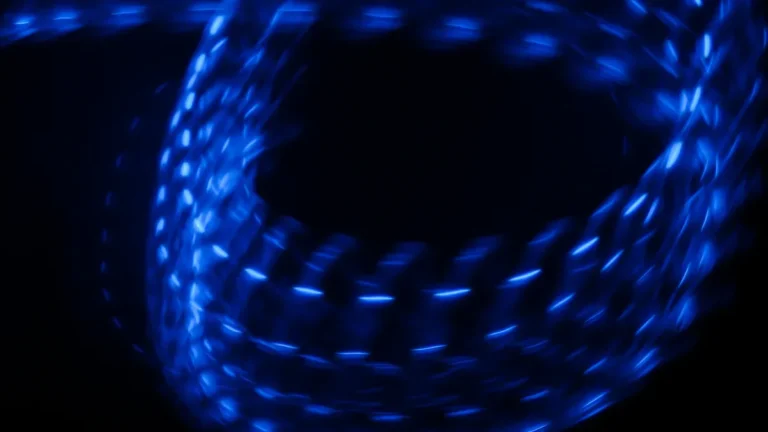
The Best LED Strip Lights You Can Buy Right Now
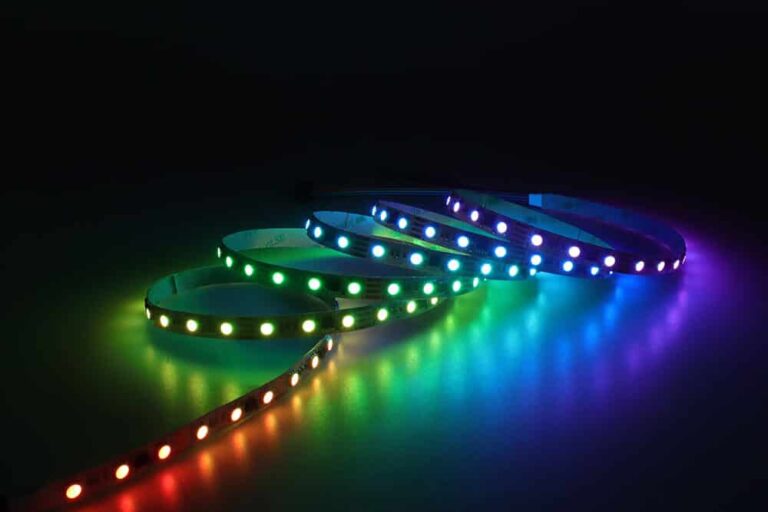
Comparing WS2811 Vs WS2812B: Key Differences


